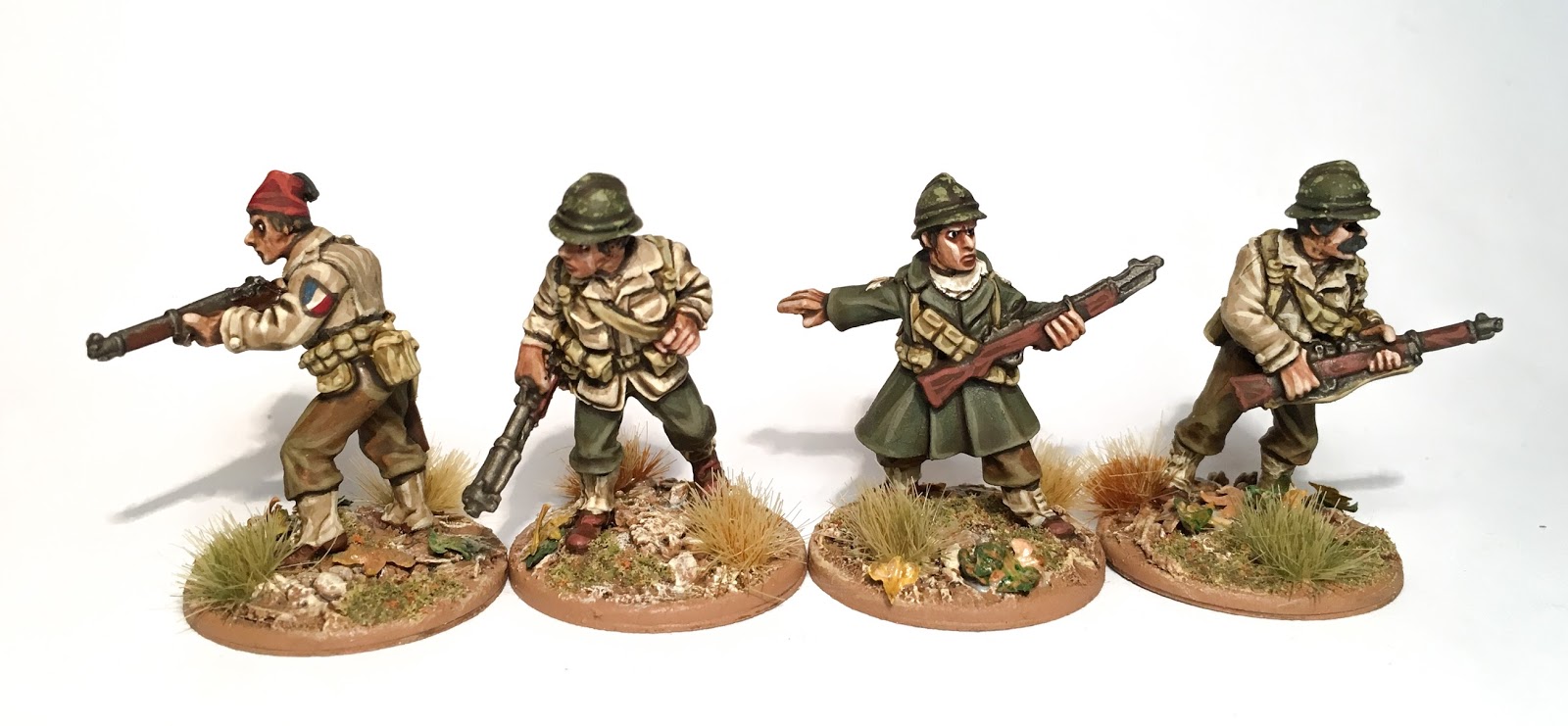Welcome to Miniature painting for beginners part 3, if you have not read part 1 or 2 yet I would suggest you check it out Part 1 and Part 2
Part of creating beautiful miniatures is making the bases look awesome as well.

The picture above is an example of “advanced” basing job. For now, though, I want to talk about simple bases even beginners can do. There are two ways to simply base your miniatures for gaming. I use both depending on the circumstance. On board games, like the D&D dungeon crawl games, I’ll just paint the base. I’ll try to match the paint color to the game’s dungeon tiles, so that it looks like the monster is actually standing in the dungeon. For war games or larger models, I’ll flock the base. Flock is a powdery substance that’s the color of grass, sand, snow, dirt, etc. You can glue it on a base to give the appears of different terrain.
How to flock your base
1. Paint the base a color that matches the flock
2. Take an old brush and paint a layer of PVA glue (elmer’s glue all) to the top of the base
3. Dip your base in your flock material of choice
4. Make sure the entire top of the base is covered
5. Let it dry and shake off any excess
How to make your own flock
If you have access to the materials, it’s fairly simple to make flock yourself. There’s an old trick that’s used by model railroaders that helps. They needed to make their own because they use a lot of flocking. Here is what you’ll need:
- Sawdust
- Paint (the color you want for the flock)
- Paint stirrer
- Old oven pan
- Container to stir your your flock in
- Flour sieve (you can get little ones at the dollar store)
- water
The process
1. Make sure the saw dust is dry.
2. Take your sawdust and run it through your sieve. You’ll want to keep the finer stuff that comes out of the sieve. Throw the larger away.
3. Take a container and pour the paint into it. I use about one ounce of craft paint for this.
4. Mix in about 1 oz of water.
5. Start pouring your saw dust in, mixing as you go, until it gets to a thick, paste-like consistency.
6. Scoop it out into the pan and spread it thin.
7. Let dry ( I set my oven to 150°F and place it in there until dry).
8. Once dry, put it in a baggie and break it up with a hammer.
9. Run through sieve to make it fine. Larger stuff will need to be broken up further.
Vallejo makes a product called ground textures. It’s a paste you can place on bases to give them a more uneven look. Essentially this is just paint and sand, so one day I decided ‘I can make that’ – so I did. This is how you can make it as well.
1. Get some play sand.
2. Sieve out the sand.
3. Place sand in a large container.
4. Add some water and stir.
5. Let the sand settle. Anything that isn’t sand will usually float to the top, so you can just skim it off.
6. Drain the water and let the sand dry out.
7. Place sand in a seal-able jar, add desired paint, and start stirring. You’ll want a thickness like a natural peanut butter.
When finished, you can spread it on the flat surface of the base with a old butter knife and let it dry.





Oh wow! Such a long, detailed, helpful piece you just wrote! I am only cutting my teeth now with miniatures painting so I have a lot to learn. Your three blog post will prove very valuable to me. Thank you very much!